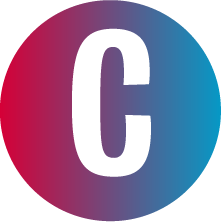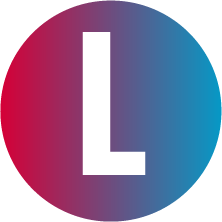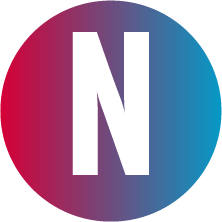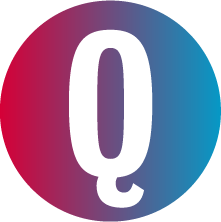Atom
Atoms are the smallest units of chemical elements, and consist of protons, neutrons, and electrons. Atoms combine to form molecules.
Atomic Clocks
Atomic clocks keep time by monitoring the electromagnetic signal that electrons in atoms emit when they change energy levels
Atom Traps
Atom traps isolate atoms from their environment to then manipulate the atom and use it to process quantum information. Atom traps often use techniques such as laser cooling, ultra-high vacuum chambers, and optical tweezers
Bit
A digital computer both stores and processes information using bits, which can be either 0 or 1. Physically, a bit can be anything that has two distinct configurations: one represented by “0”, and the other represented by “1”. In modern computing and communications, bits are often represented by the absence or presence of an electrical signal, encoding “0” and “1” respectively.
Coherence
Coherence describes the stability of a quantum system. A coherent qubit can maintain its state as 0, 1, or any superposition. Decoherence occurs when the interaction with the environment around a quantum system causes it to collapse and lose all information. The coherence time of a qubit measures how long coherence can be maintained before decoherence takes over.
Decoherence
Decoherence is the process by which a quantum state breaks down, often due to unwanted and uncontrolled interactions. Decoherence causes the state to collapse as if it was being measured.
The double-slit experiment
The double-slit experiment is a cornerstone example in quantum mechanics that demonstrates the wave-particle duality of light and matter.
Electron
An electron is a subatomic particle found in all atoms. It acts as the primary carrier of electricity, has a spin of “up” or “down”, and has a negative charge.
Electron Microscopes
Electron microscopes are able to see some of the smallest details in the world by using electrons rather than light as a source of illumination.
Entanglement
Entanglement occurs when two quantum objects are so strongly correlated that they are described by the same wavefunction. Superposition states of multiple quantum objects, such as pairs of electrons or photons, are entangled if they cannot be separated into two individual wavefunctions.
Information technology
Information technology is the use of systems to create, process, store, and exchange many kinds of electronic data and other information.
Interference
Interference happens when two or more waves meet. Their highs and lows can build on one another, called constructive interference or cancel each other out, called destructive interference.
Lasers
Lasers (which stands for Light Amplification by Stimulated Emission of Radiation) are coherent beams of light generated by the quantum process of stimulated emission. Lasers can be engineered to be much more intense than normal light, as well as having very specific frequencies (colours) or very short pulses.
Linear Algebra
Linear algebra is the branch of mathematics that studies lines and planes, vector spaces and mappings, and linear transformations with finite, or countable, possibilities. As quantum mechanics is linear, it can be modelled using many tools from linear algebra.
Molecule
A molecule is made up of two or more atoms that group together and are held by chemical bonds.
Magnetic Resonance Imaging (MRI)
Magnetic Resonance Imaging (MRI) scanners use the technique of nuclear magnetic resonance to non-invasively create 3D images of an object. MRIs are often used as a diagnostic tool in medicine.
Nuclear Magnetic Resonance (NMR)
Nuclear Magnetic Resonance (NMR) is a technique that uses pulses of electromagnetic radiation to control, manipulate and read out the spin of a nucleus within a molecule. It is one of the first implementations of quantum information processing and is already used in technology today including magnetic resonance imaging (MRI) and pharmaceutical research.
Neutron
A neutron is a subatomic particle found in the nuclei of almost all atoms. It does not have an electrical charge and remains neutral.
Photon
A photon is the smallest amount of electromagnetic energy a single particle of light at a certain wavelength can carry.
Quantization
Quantization occurs when only certain discrete values of a property are allowed. For example, the discrete height you reach on a flight of stairs is different than the continuous height you can reach on a ramp.
Quantum algorithms
Quantum algorithms are sets of instructions given to quantum computers to execute tasks. Some quantum algorithms have improved efficiencies (speed-ups) when compared to classical algorithms for the same task.
Quantum applications
Quantum application use quantum phenomena to transform and benefit the way we live, work and play. Existing quantum applications include technologies that rely on quantum mechanics, such as MRI scanners for medical imaging, lasers, solar cells, electron microscopes, and atomic clocks used for GPS.
Quantum communication
Quantum communication research develops ultra-secure communication channels and global networks by leveraging the phenomena of quantum information. Potential applications include enhanced security, privacy and cryptography, and satellite-based global quantum networks.
Quantum computing
Quantum computing harnesses the quantum behaviour of atoms, molecules and nanoelectronic circuits for a radically different and more fundamentally powerful way of computing. Potential impacts and applications of quantum computing include security, optimization, simulation of physical, chemical and biological processes, and drug and material design.
Quantum error correction
Quantum error correction refers to the measurement, mitigation and correction of quantum errors to improve the performance, size, and reliability of a quantum computer.
Quantum games
Game theory is the mathematical treatment of strategies different players may take to achieve a certain win condition, potentially in competition with other players. Quantum games allow the players to use quantum resources like superposition and entanglement to potentially improve their odds of winning.
Quantum gates/operations
In classical computing, a gate is a logical operation that processes input bits to generate output bits. In quantum computing, a quantum gate transforms a sequence of quantum bits. Quantum gates are mathematically represented by matrices.
Quantum-safe cryptography
Quantum-safe cryptography is the study of information security protocols that are designed to be secure against attacks by both classical and quantum computers.
Quantum state
The quantum state is the condition in which a physical system, such as an electron, exists. Knowing the quantum state of the system allows us to predict the outcomes of experiments.
Quantum information science and technology
Quantum Information Science and Technology (QIST) is a multidisciplinary field bringing together quantum mechanics and information technology. QIST is a field of study for mathematicians, computer scientists, physicists, chemists, engineers, and more.
Quantum Key Distribution (QKD)
Quantum Key Distribution (QKD) is a cryptographic protocol based on the uncertainty principle, where two parties exchange quantum states instead of electronic signals. QKD keeps information absolutely safe, even against an attack from a quantum computer.
Quantum materials
Quantum materials are materials with unique quantum properties used for the development of advanced quantum processors and devices. Potential applications of quantum materials include the foundation of practical quantum devices, high-capacity energy storage, and zero-loss electricity transportation.
Quantum measurement
Quantum measurement is the act of observing or interacting with a quantum system. Unlike traditional measurements, quantum measurements cause the quantum state to collapse, and some types of quantum measurements are incompatible with each other. While quantum measurements are random, the probabilities can be predicted using quantum mechanics.
Quantum mechanics
Quantum mechanics, also known as quantum physics, is the study of our universe at its most fundamental level. It explains and predicts the behaviour of atoms and molecules in a way that redefines our understanding of nature.
Quantum research
Quantum research is the study of how to harness and control the behaviour of atoms and molecules at the quantum level to find new applications.
Quantum sensors
Quantum sensors offer significant increases in sensitivity, selectivity and efficiencies thanks to the power of quantum mechanics. Potential applications of quantum sensors include early cancer detection and improved cancer treatment, improved geological exploration, and structural biology and defence.
Quantum simulation
Simulating large quantum systems using another quantum system as a simulator that is easier to control and study is called quantum simulation. A quantum simulator operates on the basis of quantum mechanics.
Quantum superposition
Quantum systems can be in a superposition if they have a probability of being measured in one of many quantum states. Whether or not a state is a superposition depends on the type of measurement being performed.
Quantum teleportation
Quantum teleportation uses entanglement to transfer the quantum state of a particle onto a different particle. Scientists have demonstrated quantum teleportation using trapped ions, spins, photons and superconducting qubits.
Quantum tunnelling
Quantum tunnelling is a wave-like phenomenon that allows quantum particles to randomly appear on the other side of a barrier, even if it doesn’t have the energy to go over it.
Qubit
A qubit, or a quantum bit, is any bit made out of a quantum system, like an electron or photon. Just like classical bits, a quantum bit must have two distinct states: one representing “0” and one representing “1”. Unlike a classical bit, a quantum bit can also exist in superposition states, be subjected to incompatible measurements, and even be entangled with other quantum bits.
Solar cells
Solar cells convert light into an electric current through a process known as the photovoltaic effect.
Spin
Spin is a property of many quantum systems defining their angular momentum and magnetism. Spin can only take certain discrete values, such as “up” or “down”, making it a good property to encode quantum bits into.
Spintronics
Spintronics, or spin electronics, uses the electrical charge and the quantum spin of electrons to store and manipulate information.
Superconducting circuits
Superconducting circuits are devices made of superconducting materials cooled to low temperatures, and designed like an electrical circuit. Superconducting circuits can be used as sensitive magnetic field sensors or as qubits.
Superconducting materials
Once cooled to cryogenic temperatures, current flows through superconducting materials with zero resistance, allowing for lossless power transmission and the expulsion of magnetic fields.
The uncertainty principle
The uncertainty principle places a fundamental limit on how much information one can know about the state of a quantum system; measuring one property of a quantum particle unavoidably disturbs another property. For example, we can only precisely measure the position of an electron if we ignore its momentum.
Wavefunction
A wavefunction in quantum physics is a mathematical model of the quantum state of a quantum system. It describes the characteristics of a particle, such as its position, momentum, time and/or spin.
Wave-particle duality
Wave-particle duality is the idea that quantum matter and light cannot be described as a "wave" or a "particle", but rather have some properties in common with waves and others in common with particles.















